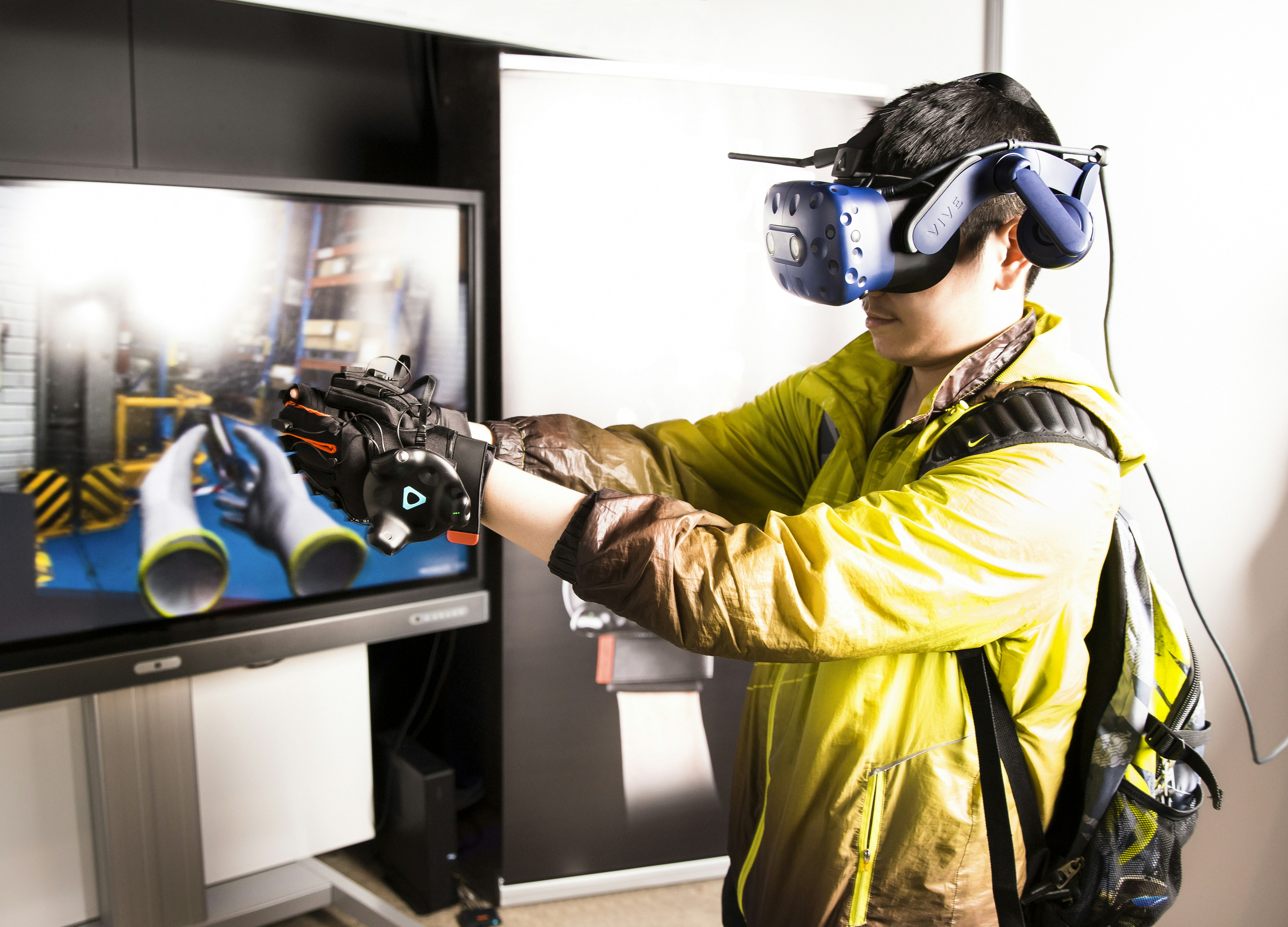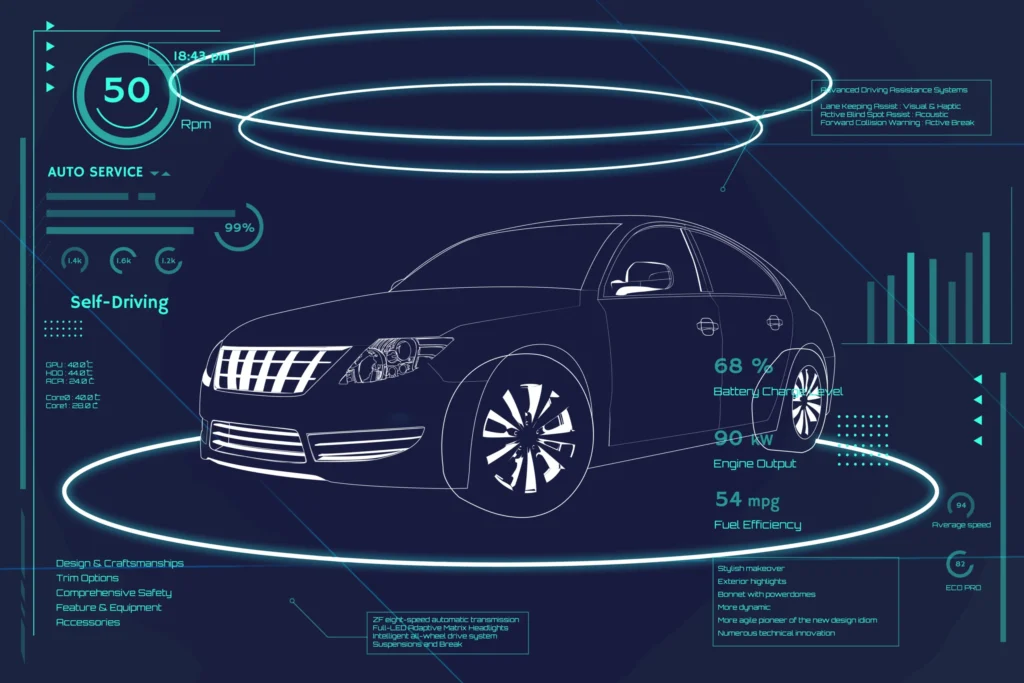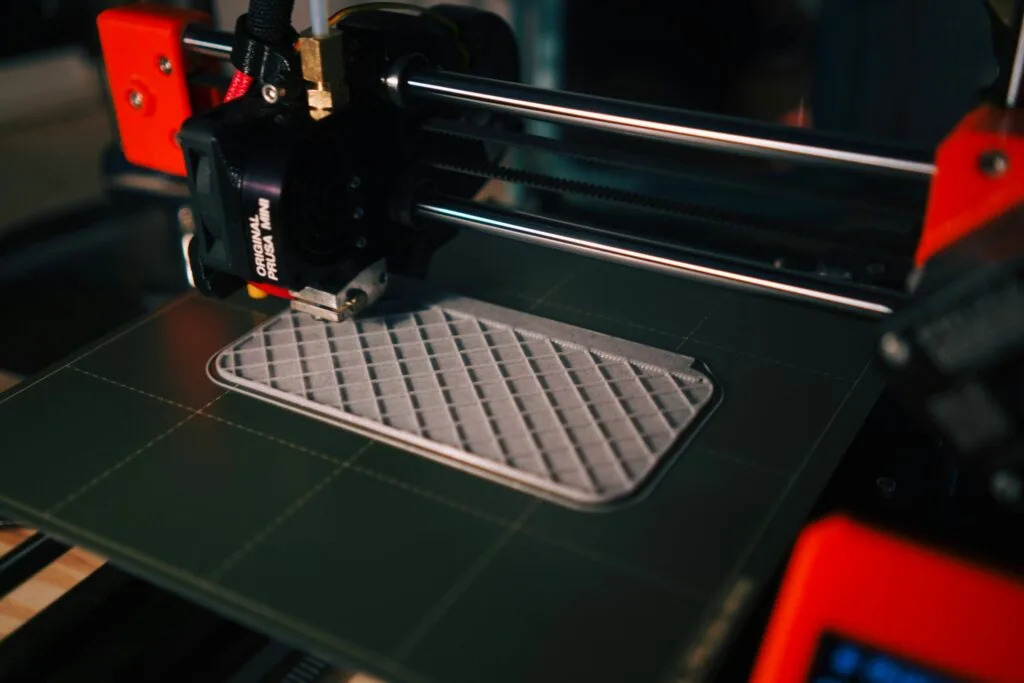Introduction to Virtual Reality in Industrial Engineering
Virtual reality (VR) represents a significant technological advancement that utilizes computer-generated environments to simulate real-world scenarios. This immersive technology enables users to interact with 3D environments in a manner that mirrors physical realities. Within the field of industrial engineering, VR has emerged as a powerful tool, providing innovative methods for training and education. As industries strive for efficiency and effectiveness, the integration of VR into training programs offers a unique approach to skill development.
In recent years, various sectors have begun to explore the potential of virtual reality in enhancing employee training. For instance, manufacturing companies are utilizing VR simulations to prepare workers for complex machinery operations. Similarly, quality assurance professionals are leveraging VR to practice defect identification and troubleshooting in a controlled virtual environment. These applications highlight the versatility of VR technology and its capacity to cater to the specific training needs of diverse industries.
The significance of immersive learning experiences cannot be overstated, particularly in industrial engineering. Traditional training methods often involve passive learning, where employees observe or read about processes without hands-on experience. In contrast, VR provides an interactive platform that allows trainees to engage actively with the material. This engagement fosters better retention of knowledge and skills, as learners can practice tasks repeatedly without the risks associated with real-world training.
Moreover, the adoption of VR technology in industrial engineering training addresses some of the logistical challenges associated with conventional training programs. It reduces downtime, minimizes resource expenditure, and enhances safety by mitigating potential hazards during the learning process. As such, virtual reality stands at the forefront of revolutionizing how industrial engineering professionals acquire and refine their skills, ultimately contributing to improved workforce performance and operational efficiency.
Benefits of Using Virtual Reality in Training
The integration of Virtual Reality (VR) in industrial engineering training programs presents several notable advantages that enhance the learning experience for trainees. One of the primary benefits is the significant increase in engagement and motivation. Traditional training methods often struggle to captivate learners, leading to reduced interest and retention. However, VR technology offers immersive simulations that allow participants to actively interact with their surroundings, thereby fostering a more stimulating and engaging learning environment.
Another crucial benefit of utilizing VR in training is the ability to provide hands-on experience in a controlled, risk-free setting. In industrial engineering, the stakes can be remarkably high, and errors in the real world can have severe consequences. VR enables trainees to practice complex procedures and navigate various scenarios without the fear of making mistakes that could lead to injuries or costly damages. This safe learning space encourages exploration and experimentation, allowing individuals to develop their skills with confidence.
Moreover, VR facilitates the visualization of intricate engineering concepts that are often challenging to comprehend using conventional methods. By presenting information in a three-dimensional environment, students can better understand spatial relationships, measurements, and designs. This visual aspect of learning can significantly enhance cognitive processing, making it easier for trainees to grasp and retain complex ideas and techniques.
Additionally, studies suggest that information retention and skill acquisition are markedly improved when learners engage with content through immersive experiences. By actively participating in simulations, trainees are likely to retain more information over time, leading to better performance in real-world applications. Overall, the adoption of VR in industrial engineering training programs paves the way for more effective and engaging educational experiences, making it a valuable tool for developing the engineers of the future.
Applications of VR in Industrial Engineering Training
Virtual reality (VR) technology has revolutionized the way industrial engineering training is conducted, offering immersive simulations that enhance understanding and skills acquisition. One notable application of VR in this field is the simulation of manufacturing processes. By creating detailed virtual environments that replicate real-world settings, trainees can engage with various stages of production without the risks associated with live training. This allows them to experiment with processes, identify bottlenecks, and gain insights into efficiency improvements that are critical in an industrial context.
Another significant application is found in virtual assembly lines. In these settings, trainees can learn the intricacies of assembly processes through hands-on experience within a controlled virtual space. This enables them to practice and perfect their assembly techniques while receiving immediate feedback. The freedom to make mistakes in a virtual setting without consequences further contributes to a deeper understanding of the workflow and quality control measures necessary for effective assembly line management.
Moreover, VR plays a crucial role in equipment operation training. Trainees can learn to operate complex machinery in a risk-free environment, where they can familiarize themselves with equipment controls and procedural requirements. This simulation not only enhances their technical proficiency but also reinforces safe operational practices, fundamentally addressing the importance of safety in industrial engineering contexts.
Safety training scenarios made possible through VR provide an additional layer of preparedness for trainees. These simulations immerse participants in emergency situations, enabling them to practice safety protocols and crisis management in a realistic but controlled manner. This practical experience is indispensable in developing the critical thinking and quick decision-making skills necessary in real-world industrial environments.
Overall, the applications of VR in industrial engineering training offer rich, interactive experiences that significantly improve learner engagement and effectiveness, preparing trainees to tackle real-world industrial engineering challenges with confidence.
Case Studies of VR Implementation in Industry
Virtual Reality (VR) has been applied successfully in various industrial engineering training programs, yielding significant benefits in terms of safety, efficiency, and employee engagement. One noteworthy example is Boeing, which integrated VR technology into its assembly line training. The company faced challenges related to the complexity of training new employees on intricate assembly processes. To address this, Boeing developed immersive VR simulations that replicate real-world assembly tasks. These simulations enable trainees to practice procedures in a risk-free environment, allowing them to build confidence and competence. Feedback from participants indicated higher retention of information and improved hands-on skills, reducing the training time by approximately 35%.
Another prime example comes from Ford Motor Company, which utilized VR to train engineers and designers. Ford focused on enhancing collaborative skills, particularly in the context of design iterations and problem-solving. The company encountered hurdles with geographical dispersions among teams, which sometimes hindered effective communication. By employing VR environments, Ford facilitated a shared virtual space where teams could interact with 3D models and test designs collaboratively. Participants reported a streamlined design process and reduced miscommunications, ultimately leading to a faster development cycle and improved market responsiveness.
In the realm of healthcare engineering, Siemens implemented VR for training service technicians dealing with medical equipment. Here, the challenge was the high-stakes environment of healthcare, where errors could have dire consequences. Siemens developed a comprehensive VR training curriculum that provided technicians with realistic scenarios to practice troubleshooting and servicing equipment. Testimonials from participants emphasized the heightened preparedness and confidence gained from the immersive training. The organization noted a marked decline in service-related errors post-implementation, showcasing the effectiveness of VR as a training tool.
These case studies illustrate that the adoption of VR in industrial engineering training not only overcomes implementation challenges but also leads to quantifiable benefits. As more companies recognize the potential of VR technology, its role in enhancing training programs is likely to expand, fostering a safer and more proficient workforce.
Challenges and Limitations of VR in Training
While the integration of virtual reality (VR) in industrial engineering training offers numerous benefits, it is not without its challenges and limitations. One primary concern is the high initial investment costs associated with implementing VR technology. Purchasing VR hardware and software, as well as developing customized content for specific training purposes, can represent a significant financial burden for organizations. This initial investment may deter smaller companies from adopting VR solutions, thereby limiting access to state-of-the-art training methodologies.
In addition to cost, the requirement for robust technical infrastructure presents another layer of complexity. Successful deployment of VR training programs necessitates sufficient IT support, including high-speed internet connections, powerful computers, and VR-specific peripherals. Organizations may struggle with existing technological capabilities, thus hindering the transition to more immersive training environments. Businesses must weigh their current systems against the necessary upgrades to facilitate effective VR training.
Furthermore, resistance from traditional training methods can pose a challenge to the implementation of VR techniques. Employees accustomed to conventional training modalities may express skepticism about the effectiveness of VR, fearing a steep learning curve or potential ineffectiveness. This cultural barrier can lead to hesitancy in adopting innovative training solutions, underscoring the importance of comprehensive change management strategies to promote acceptance and facilitate a smoother transition.
Lastly, the quality and relevance of VR content play crucial roles in ensuring the success of training initiatives. Poorly designed or outdated VR programs can lead to ineffective learning experiences and disengagement among participants. It is crucial for organizations to invest in quality content creation processes, ensuring that training materials are accurate, current, and aligned with industry best practices. Addressing these challenges is essential for maximizing the potential of VR in industrial engineering training.
Future Trends of VR in Industrial Engineering Training
As we look toward the future of virtual reality (VR) in industrial engineering training, several significant trends and advancements are expected to shape this landscape. The integration of artificial intelligence (AI) and machine learning with VR stands out as a transformative potential. By harnessing these technologies, training programs can become more adaptive and responsive to individual learner needs. AI can analyze user performance and tailor scenarios to enhance skill acquisition, thereby creating personalized training experiences that cater to varying levels of expertise and learning paces.
Furthermore, the continuous evolution of VR hardware is anticipated to play a crucial role in making industrial engineering training more accessible and cost-effective. As technology advances, we can expect a reduction in the costs associated with VR devices, resulting in wider adoption within educational and industrial settings. Improved hardware, such as lighter headsets with better resolution and more responsive tracking systems, can significantly enhance the immersive experience, allowing trainees to engage more fully in simulated environments that reflect real-world applications.
Another promising trend is the increased use of collaborative VR platforms that enable teams to work together in a shared virtual environment. This aspect can be particularly beneficial for industrial engineering training, as many projects require teamwork and collaboration to solve complex engineering problems. Such immersive group training experiences can help trainees develop essential soft skills, including communication and problem-solving, alongside their technical competencies.
Moreover, as industries continue to recognize the potential of VR, there may be a surge in the development of industry-specific training modules. This shift may lead to more standardized training processes across companies, enhancing the overall quality of industrial engineering education. These future trends suggest a dynamic evolution in how VR will be leveraged in training, driving innovation and efficiency within the field of industrial engineering.
Comparative Analysis: VR vs. Traditional Training Methods
In recent years, the application of virtual reality (VR) in industrial engineering training has gained significant attention. This immersive technology offers a transformative approach compared to traditional training methods. A comparative analysis reveals important differences in effectiveness, engagement levels, costs, and time efficiency between these two approaches.
When evaluating the effectiveness of VR-based training versus traditional methods, studies have shown that VR can enhance information retention. The immersive environment allows trainees to engage in realistic simulations that closely mimic real-world scenarios. In contrast, traditional training often relies on passive techniques, such as lectures or textbook reading, which may lead to lower retention rates. With VR training, learners can practice hands-on skills in a safe and controlled environment, fostering a deeper understanding of complex engineering concepts.
Engagement levels are generally higher in VR-based training. Trainees are more likely to remain focused and actively participate when using interactive VR experiences compared to standard classroom settings. Traditional training can sometimes struggle with maintaining participant interest, especially when information delivery is primarily didactic. VR increases motivation through gamified elements and realistic challenges, making learning an more engaging experience.
From a cost perspective, while VR training may require significant upfront investment in technology and software, the long-term savings can be substantial. Traditional training often incurs recurring expenses such as physical materials, travel, or venue rentals. Additionally, the time efficiency offered by VR allows companies to reduce training duration, as employees can practice skills at their own pace and revisit challenging scenarios as needed, optimizing learning outcomes.
While both VR and traditional training methods have their respective advantages and disadvantages, the choice largely depends on the specific training needs within industrial engineering. Organizations should assess factors such as training goals, audience demographics, and budget constraints before making a decision.
Creating an Effective VR Training Program
Developing a successful virtual reality (VR) training program in industrial engineering requires a comprehensive approach that prioritizes the unique training needs of an organization. The initial step involves identifying specific training objectives and requirements. Organizations should conduct assessments to determine the skills and knowledge gaps among employees, as well as the complexities of tasks that could benefit from VR simulation. This analysis will lay the groundwork for a tailored training program that addresses critical learning goals.
Once training needs are established, selecting the appropriate VR tools and content becomes vital. It is important to choose VR platforms that are compatible with the required training modules and can provide realistic simulations of industrial environments. The quality and relevance of the VR content are crucial; thus, collaborating with content developers who have expertise in industrial engineering can enhance the realism and educational value of VR scenarios. This collaboration ensures that the training reflects actual processes and practices in the field, making it easier for learners to adapt and apply their skills.
Stakeholder involvement is another key element in the design of an effective VR training program. Engaging various stakeholders—including management, trainers, and employees—during the development process can provide insights into practical applications and expectations for the training. Gathering feedback from these groups can help refine the training content and delivery methods, ensuring that the program resonates with its intended audience.
Finally, measuring the effectiveness of the VR training program is crucial for continuous improvement. Organizations should implement assessment tools to evaluate learner performance and retention, as well as gather feedback for further iterations of the training material. This feedback loop not only aids in validating the training program’s impact but also guides future updates to maintain relevance in an evolving industrial landscape. By focusing on these best practices, organizations can create an effective VR training program that enhances skills and outcomes in industrial engineering.
Conclusion: The Future of Training in Industrial Engineering
As the field of industrial engineering continues to evolve, the integration of advanced technologies like virtual reality (VR) is proving to be a pivotal element in enhancing training methodologies. The key takeaways from this exploration highlight how VR can transform traditional training paradigms by providing immersive, interactive experiences that facilitate skill acquisition and retention. This departure from conventional techniques not only engages learners but also significantly improves their practical understanding of complex systems and procedures.
The immersive nature of VR environments allows trainees to experiment and make mistakes in a risk-free setting, an experience that is particularly advantageous in sectors where safety and precision are paramount. Through simulations that mimic real-world scenarios, industrial engineering students and professionals can practice their decision-making skills, deepen their technical knowledge, and develop a comprehensive understanding of their roles in various processes. This hands-on learning experience is essential in fostering competent engineers who are prepared to meet the demands of modern industries.
Moreover, as we look forward, the importance of staying current with technological advancements cannot be overstated. The fusion of VR into training programs signals a shift towards more effective education methods that are adaptable and responsive to the dynamic needs of industrial sectors. It is crucial for organizations to embrace these innovative solutions to not only elevate the competency of their workforce but also to boost overall productivity. By investing in VR training, industries can lead the way in cultivating a skilled labor force equipped to tackle the challenges of the future.
In conclusion, the transformative potential of virtual reality in industrial engineering training presents a promising avenue for development. It is imperative for industries to actively explore and implement these cutting-edge training solutions to remain competitive and enhance the effectiveness of their operations.


